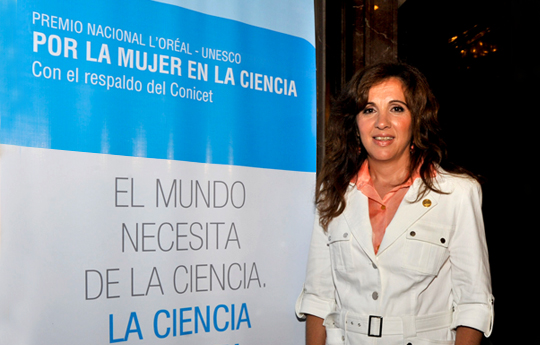Exact and Natural Sciences
Plate tectonics: things have movement
A scientist analyzes the earthquake that affected Chile and Argentina
Patricia Alvarado, CONICET independent researcher at the Centro de Investigaciones de la Geósfera y Biósfera (CIGEOBIO-CONICET) [Geosphere and Biosphere Research Centre], spoke about the 8.4 magnitude earthquake that killed at least 8 people and left millions of evacuees. She explained the causes and consequences of these movements in the region.
What caused this earthquake?
This earthquake was the result of the compression between the Nazca and South America plates. These travel in opposite direction at a speed of 7 centimetres a year and suddenly lock together, compress and release energy all of a sudden resulting in that 8.4 earthquake that stroke Chile.
What are the effects and the consequences of it?
So far, a tsunami is expected so there have been warnings in neighbouring areas and in all the Pacific as they are waves that travel towards the other extreme and can affect places as different as Hawaii or Japan. It was proved, for instance, that the earthquake of the sixties (which was bigger than this one), caused deaths 24 hours later on the other side of the continent. In this case, we know about the deterioration of the constructions but we have to take it easy and protect ourselves.
Sismo, tremor, earthquake are used interchangably. Is that correct?
I would say it is incorrect. A sismo is an imperceptible movement, people cannot notice it. We speak about an earthquake when it causes damages and there is a population that is affected by it, however small. In this case, we refer to the latter due to the eight casualties and the evacuees. It had a magnitude of 9 in the epicentre.
Can these collisions be forecasted?
There have been great advances in the last years with the incorporation of GPS seismic monitoring network. Sometimes it is possible to provide a forecast indicating the area that is more likely to be hit by a sismo, but it is often not precise. I compare it with what happens in medicine when a physician states when a baby can be born: it is known more or less when it is going to happen but there cannot be a specific date or time when the baby is going to be born. In the case of earthquakes, they occur every hundreds and thousands years, so the scale is large and we do not have a complete record. Anyway, there have been advances and the devices have become more accurate in the last 30 years.
Why does it always strike Chile?
Chile is the contact zone where a subduction process takes place, that is to say, that more than seven or eight thousand kilometres in continuous compression. Thus, when these two plates meet or one of them sinks under the other with a sudden movement, that resulting energy is released and it also promotes the growth of the Cordillera.
Do the plates remain overlapped?
Yes, they do. When they meet there is one that is heavier and thicker so that is the one that sinks. In this case, it is the oceanic that is placed under the one we are standing on, in South America. This movement is constant, there are tiny sismos that we do not perceive and belong to the ones of millimetres a year.
Do the plates go back to their initial position?
Each point that moves tries to go back to its initial position, what results in what is known as replicas or sismos of smaller earthquake. There have been many so far, with more than 5 degrees on the Richter scale, and they will surely go on for months, as a result of the same phenomenon.
- By Jimena Naser
